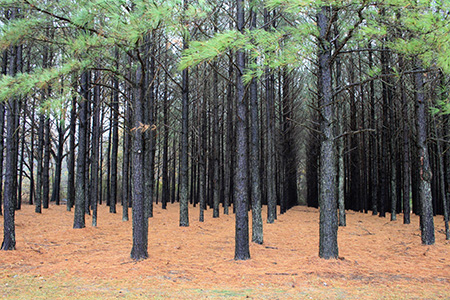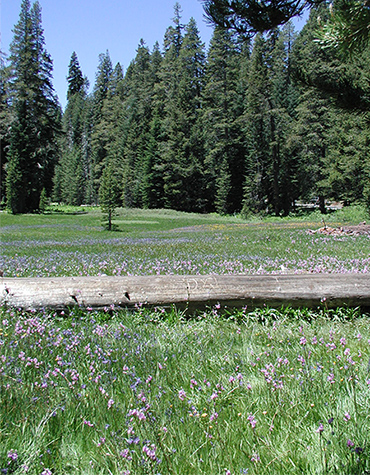Native Plant Conservation Campaign News: Studies elevate concerns about trillion trees planting campaigns to fight climate change
July 2, 2020
New studies confirm the dangers of popular “
trillion trees” programs to plant trees to fight climate change.
Scientists call instead for (i) most  important, massive reductions in fossil fuel consumption,
important, massive reductions in fossil fuel consumption, and (ii) large scale conservation and restoration of native forests.
What has been described as “
tree planting mania” has been going on since the earliest attempts to confront climate change. It was proposed in the 1992
Kyoto Protocol and the 2015
Paris Agreement. It accelerated sharply after an
article published last year in the journal Science suggested that a trillion new trees could absorb two-thirds of the CO2 that humans have added to the atmosphere.
The approach was widely challenged within the scientific community for the accuracy of the
estimates of CO2 absorption and for the potential for trees to be planted in areas not naturally forested, such as
African grasslands, among
other reasons. In fact this article was so widely critized that the authors issued a
correction in May, 2020.
Despite the criticisims, tree planting has continued to gain powerful support. The World Economic Forum
launched a Trillion Tree Initiative at this year’s meeting. Conservation groups like the World Wildlife Federation have offered their own
campaigns. Further,
The oil giant Shell has asked UK drivers to pay a surcharge on their gasoline to pay for tree planting. The Bonn Challenge, an international agreement to add 1.35 million square miles of forests to by 2030,
is on track. Marc Benioff has started his own
trillion-tree crusade. Even
Donald Trump is talking about planting trees!
Sadly, this very attractive idea turns out to be dangerous. Recent studies have revealed some of the problems.
First, many international schemes involve commercial plantations of nonnative trees. An April
assessment in the journal Nature reviewed tree planting proposals from 43 countries. Researchers found that 45% would create plantations of acacia, eucalyptus and other nonnatives. Such plantations are frequently harvested, making them net sources rather than sinks of CO2 over time.
The assessment estimated that on average, natural forests are 40 times better than plantations at storing carbon. They concluded that plantations should no longer be classified as “forest restoration”.
Lead author, University of Edinburgh professor Simon Lewis said in an
interview, "There is a scandal here… [P]olicy makers are calling vast monocultures 'forest restoration'. And worse, the advertised climate benefits are absent." Acclaimed author and botanist Diana Beresford-Kroeger
put it differently: ““We need to know what we are doing, and you can’t go all asswise about stuff [like tree planting] .”
 Second, overzealous plantation projects sometimes replace natural ecosystems.
Second, overzealous plantation projects sometimes replace natural ecosystems. For example, a case study from Chile published
in the June issue of Nature found that biodiversity may have actually been reduced as government-subsidized plantations replaced native forests. Similar problems have occurred in
Ireland. Some have even called for
planting trees in tropical grasslands and wetlands, which would disrupt local wildlife and water supplies.
Photos: Plantation, public domain. Actual forest, Sierra Nevada © Emily B. Roberson
 important, massive reductions in fossil fuel consumption, and (ii) large scale conservation and restoration of native forests.
important, massive reductions in fossil fuel consumption, and (ii) large scale conservation and restoration of native forests. important, massive reductions in fossil fuel consumption, and (ii) large scale conservation and restoration of native forests.
important, massive reductions in fossil fuel consumption, and (ii) large scale conservation and restoration of native forests. Second, overzealous plantation projects sometimes replace natural ecosystems. For example, a case study from Chile published in the June issue of Nature found that biodiversity may have actually been reduced as government-subsidized plantations replaced native forests. Similar problems have occurred in Ireland. Some have even called for planting trees in tropical grasslands and wetlands, which would disrupt local wildlife and water supplies.
Second, overzealous plantation projects sometimes replace natural ecosystems. For example, a case study from Chile published in the June issue of Nature found that biodiversity may have actually been reduced as government-subsidized plantations replaced native forests. Similar problems have occurred in Ireland. Some have even called for planting trees in tropical grasslands and wetlands, which would disrupt local wildlife and water supplies.